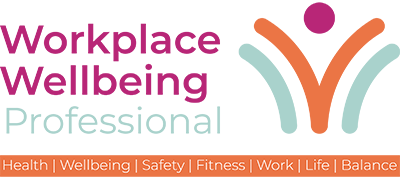When organisations talk about workplace wellbeing, most imagine it as something designed for their full-time staff – the people whose names are in the HR system – whose contracts include paid time off and benefits, and who show up to the team Christmas party or join the Slack channels.
But there’s a growing disconnect. More workers than ever before don’t fall into this category. In fact, in many companies today, a significant portion of the team is made up of non-permanent workers – temps, freelancers, consultants or contractors.
These individuals are essential to how we operate, yet they are often excluded from the very wellbeing initiatives that companies promote as evidence of their inclusive cultures.
As someone who works daily at the intersection of workforce strategy, culture, and belonging, I believe it’s time we widen the circle. Because if our wellbeing strategies aren’t designed for everyone who contributes to our success, they’re not truly inclusive.
The Wellbeing Blind Spot
There’s a growing body of research – and lived experience – that suggests temporary and contingent workers often experience higher levels of stress, financial insecurity, and social disconnection than their full-time peers. They frequently lack access to healthcare, paid sick leave, or even the sense of stability that comes with a permanent role.
But the issue goes beyond benefits. Contingent workers can often feel “othered” in the workplace. They may not be invited to team building events. Their birthdays might not get mentioned. They’re sometimes left out of internal communications or culture-building initiatives, simply because they’re seen as “not really staff.”
This is not just a cultural oversight. It’s a wellbeing issue.
Why It Matters Now
Since the pandemic, we’ve seen a major shift in how people value work. Flexibility, purpose, and psychological safety are now at the heart of workplace expectations, and this applies to all workers, not just those on payroll.
At the same time, the contingent workforce is growing rapidly. At Magnit, we work with global clients who rely on a blended workforce model, and many are now asking a critical question: How do we build a culture of belonging and wellbeing when 30, 40, or even 50% of our team is contingent?
It’s a question every organisation needs to start asking. Because the reality is, workers are no longer willing to separate wellbeing from work. If your culture excludes large segments of your workforce, even unintentionally, you’re going to struggle to attract and retain the best talent, full stop.
Where to Begin
Making wellbeing more inclusive doesn’t always require a dramatic overhaul. In fact, many companies already have the right intentions, it’s often the execution that’s unintentionally narrow.
One simple but impactful starting point is to revisit your current wellbeing offerings and ask who they’re really designed for. Are your initiatives and resources technically available to contingent workers? If so, are they made visible and accessible? Too often, companies provide a wealth of tools and programmes that temporary workers don’t even know exist. Even small tweaks, like making sure contractors are included in communications, or giving them access to the same mental health resources as permanent employees, can make a real difference.
Culture also plays a huge role. Are your contingent workers invited to team meetings, culture events, or wellbeing activities? Do they feel seen and valued by the wider organisation, or siloed and transactional? Inclusion here doesn’t have to mean expensive perks, it could be as simple as a welcome message, an invite to a wellbeing webinar, or a check-in from a team lead. It’s these little things that shape someone’s sense of belonging.
Language is another subtle but powerful lever. When you talk about your team, are you including everyone, or only permanent staff? Shifting internal messaging from “our employees” to “our workforce” may seem minor, but it helps set a more inclusive tone. It signals that everyone, regardless of employment type, is part of something bigger.
Access to mental health support is also a critical area of focus. While not every organisation can extend full benefits to contingent workers, there are ways to be creative. Some companies are offering open-access wellbeing sessions, mindfulness programmes, or curated resource hubs that don’t require formal employment status. Others are negotiating discounted access to third-party tools or platforms. What matters most is the intent: making sure no one is left unsupported.
And finally, we need to listen more. Too often, contingent workers aren’t included in employee surveys or feedback loops. Yet they have valuable insights into what’s working and where gaps exist. Providing a way for them to share their experiences, anonymously if needed, can surface the kind of practical, people-first ideas that wellbeing strategies truly benefit from.
A More Human Approach
Workplace wellbeing isn’t a luxury offering for a select group. It’s the foundation of a healthy, productive, and engaged workforce. And as the definition of that workforce evolves, so must our approach to supporting it.
Temporary workers might not be on your payroll forever, but while they’re part of your team, they deserve the same care and consideration as anyone else. That doesn’t mean replicating every benefit across the board, but it does mean being intentional, thoughtful, and inclusive about what you offer, how you communicate, and who you listen to.
At Magnit, we’ve seen those small shifts in mindset – backed by a willingness to rethink policies and cultural norms – can lead to big changes in how people feel and perform at work. Inclusion shouldn’t stop at diversity hiring metrics. It must extend to every corner of the workforce, including the people who might otherwise go unseen.
Because in the end, workplace wellbeing isn’t just about yoga classes or mental health days. It’s about making people feel like they belong – no matter how long they’re with you.

Rebecca Perrault is a seasoned human capital consulting veteran who serves as the VP of Diversity and Inclusion at Magnit, a global leader in contingent workforce management solutions. In this pivotal role, she spearheads initiatives aimed at enhancing diversity, equity, and inclusion across Magnit's operations and its client organisations worldwide. With over a decade of experience in advancing DE&I strategies, Perrault has collaborated with numerous Fortune 1000 companies and nonprofit organisations to foster inclusive workplace cultures.
At Magnit, she is instrumental in developing comprehensive DE&I solutions that address unconscious bias in hiring practices and promote cultural readiness, workforce diversity, supplier diversity, and data-driven diversity intelligence. Her leadership is central to Magnit's commitment to embedding D&I principles into the fabric of contingent workforce management, thereby driving meaningful change for both the company and its clients.


